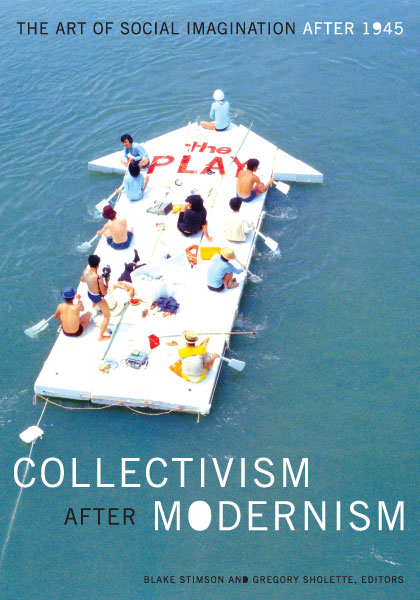Deirdre Boyle: Subject to Change: Guerrilla Television Revisited (1997)
Filed under book | Tags: · 1970s, activism, art, collective art, critique, television, video, video activism, video art

“Part of the larger alternative media tide which swept the country in the late sixties, guerilla television emerged when the arrival of lightweight, affordable consumer video equipment made it possible for ordinary people to make their own television. Fueled both by outrage at the day’s events and by the writings of people like Marshall McLuhan, Tom Wolfe, and Hunter S. Thompson, the movement gained a manifesto in 1971, when Michael Shamberg and the Raindance Corp. published Guerilla Television. As framed in this quixotic text, the goal of the video guerilla was nothing less than a reshaping of the structure of information in America.
In Subject to Change, Deidre Boyle tells the fascinating story of the first TV generation’s dream of remaking television and their frustrated attempts at democratizing the medium. Interweaving the narratives of three very different video collectives from the 1970s–TVTV, Broadside TV, and University Community Video–Boyle offers a thought-provoking account of an earlier electronic utopianism, one with significant implications for today’s debates over free speech, public discourse, and the information explosion.”
Keywords and phrases
Michael Shamberg, Megan Williams, guerrilla television, Freex, Paul Goldsmith, portapak, WNET, Abbie Hoffman, Allen Rucker, KTCA, TVTV Show, Greg Pratt, TVTV’s, Ira Schneider, Cajun, David Loxton, cable television, Bill Murray, Harold Ramis, Appalachia
Publisher Oxford University Press US, 1997
ISBN 0195110544, 9780195110548
286 pages
PDF
Excerpt published in Art Journal, 1985.
Blake Stimson, Gregory Sholette (eds.): Collectivism after Modernism: The Art of Social Imagination after 1945 (2007)
Filed under book | Tags: · collaboration, collective art, participation, situationists, video art

“The desire to speak in a collective voice has long fueled social imagination and artistic production. Prior to the Second World War, artists understood collectivization as an expression of the promise or failure of industrial and political modernity envisioned as a mass phenomenon. After the war, artists moved beyond the old ideal of progress by tying the radicalism of their political dreams to the free play of differences.
Organized around a series of case studies spanning the globe from Europe, Japan, and the United States to Africa, Cuba, and Mexico, Collectivism after Modernism covers such renowned collectives as the Guerrilla Girls and the Yes Men, as well as lesser-known groups. Contributors explore the ways in which collectives function within cultural norms, social conventions, and corporate or state-sanctioned art. They examine the impact of new technologies on artistic practice, the emergence of networked group identity, and the common characteristic of collective production to blur the typical separations between artists, activists, service workers, and communities in need.
Together, these essays demonstrate that collectivism survives as an influential and increasingly visible artistic practice despite the art world’s star system of individuality. Collectivism after Modernism provides the historical understanding necessary for thinking through postmodern collective practice, now and into the future.”
Contributors: Irina Aristarkhova, Jesse Drew, Okwui Enwezor, Rubén Gallo, Chris Gilbert, Brian Holmes, Alan Moore, Jelena Stojanovi´c, Reiko Tomii, Rachel Weiss.
Publisher University of Minnesota Press, 2007
ISBN 0816644624, 9780816644629
xviii+312 pages
Key terms: Art & Language, collectivism, unitary urbanism, Akasegawa Genpei, video art, detournement, conceptual art, Asger Jorn, Fluxus, ABTV, Ernesto Leal, Situationist International, Guy Debord, Havana, Glexis Novoa, cold war, Art Workers Coalition, avant-garde, Cuba, Gutai
PDF (9 MB, updated on 2019-12-18)
Comments (2)Doug Ashford + Naeem Mohaiemen: Collectives in Atomised Time (2008)
Filed under book | Tags: · activism, collaboration, collective art

The endless debates of art vs. politics; reportage vs. agitprop vs. poetics; what is and isn’t art. My feeling is that the specific reality within which our Visible Collective project formed, operated, and ended, were very specific to the 00’s. Even the way in which we quickly became commodified within an uber-category of “collective art practices” is specific to an over-heated market. The context within which Group Material worked was different, and the results were….?
Published by: IDENSITAT Contemporary Art Association, Spain, 2008
Cover image by Fred Askew

